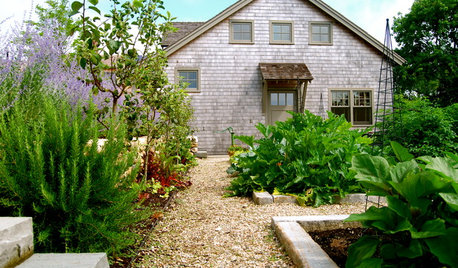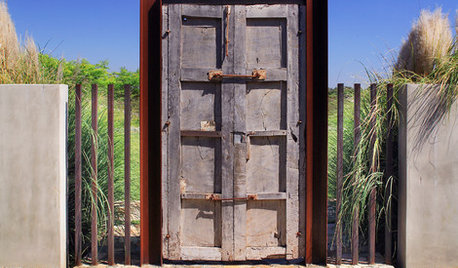sharp/coarse sand to amend clay
joeschmoe80
11 years ago
Related Stories

GARDENING GUIDESGardening Solutions for Heavy Clay Soils
What’s a gardener to do with soil that’s easily compacted and has poor drainage? Find out here
Full Story
GARDENING GUIDESHow to Stop Worrying and Start Loving Clay Soil
Clay has many more benefits than you might imagine
Full Story
GARDENING GUIDESGarden Myths to Debunk as You Dig This Fall and Rest Over Winter
Termites hate wood mulch, don’t amend soil for trees, avoid gravel in planters — and more nuggets of garden wisdom
Full Story
LANDSCAPE DESIGNHow to Shape a Rain Garden and Create the Right Soil for It
Learn how to grade, lay out and amend the soil in your rain garden to support your plants
Full Story
GARDENING GUIDESThe Simple Secret to Gardening Success
Learn the kinds of soil and a DIY type test to make sure you’re putting the right plant in the right place
Full Story
GARDENING GUIDESNew Ways to Think About All That Mulch in the Garden
Before you go making a mountain out of a mulch hill, learn the facts about what your plants and soil really want
Full Story
FARM YOUR YARDHow to Grow Vegetables in Containers
Get glorious vegetables and fruits on your patio with a pro’s guidance — including his personal recipe for potting mix
Full Story
RUSTIC STYLEBrick Floors: Could This Durable Material Work for Your House?
You love the old-world look, but will you like the feel of it underfoot? Learn the pros and cons of interior brick flooring
Full Story
MATERIALSMesquite: The Brawny Beauty for All Over the Home
Denser than other hardwoods and sporting beautiful coloration, mesquite makes a fine material for flooring, countertops, furniture and more
Full Story
CONTAINER GARDENSContainer Gardening Basics: The Dirt on Soil
Learn the types of potting soil available and the best mixes to help your containers thrive
Full Story






jean001a
art_1
Related Professionals
Garden City Landscape Architects & Landscape Designers · Matthews Landscape Contractors · Brookline Landscape Contractors · Fort Hunt Landscape Contractors · Lebanon Landscape Contractors · Middle River Landscape Contractors · Munster Landscape Contractors · North Highlands Landscape Contractors · Smyrna Landscape Contractors · Wallingford Landscape Contractors · Eastlake Landscape Contractors · Crowley Landscape Contractors · Arbutus Decks, Patios & Outdoor Enclosures · Kissimmee Decks, Patios & Outdoor Enclosures · Sugar Land Decks, Patios & Outdoor Enclosuresnc_crn
wayne_5 zone 6a Central Indiana
strobiculate
kevinitis
Kimmsr
wayne_5 zone 6a Central Indiana
kevinitis
bluegoat_gw
toxcrusadr
Kimmsr
toxcrusadr
kevinitis
RpR_
Kimmsr
wayne_5 zone 6a Central Indiana
Kimmsr
Laurel Zito
Albion1966
Kimmsr
toxcrusadr